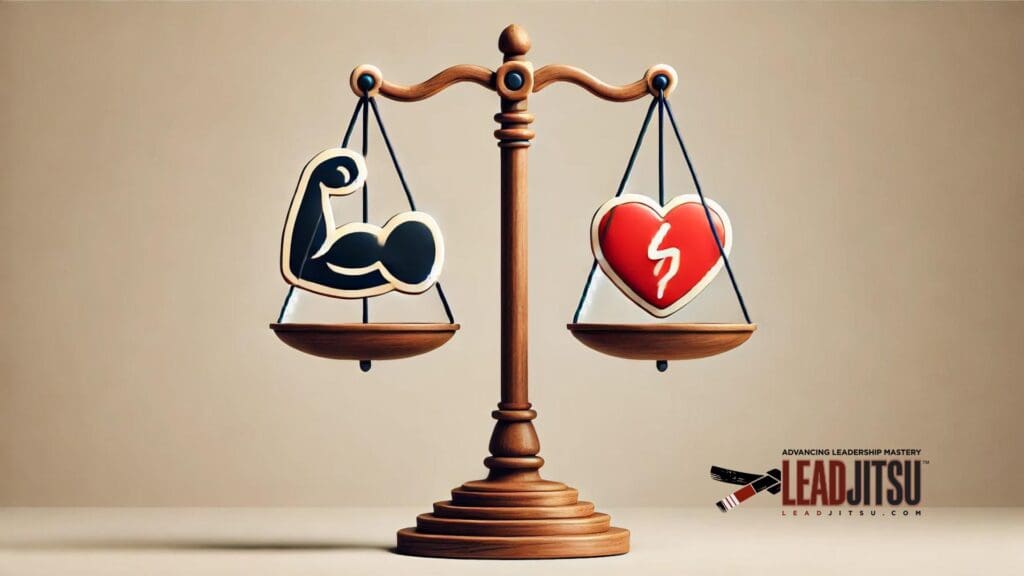
Does it matter?
Words are powerful.
They shape our perceptions, influence our behavior, and define our reality. In the realm of leadership, the words we choose to describe leaders can have a profound impact on how leadership is perceived and practiced. One such term that has been widely used and celebrated is “strong leader.” But should we still be using this term? Does it unintentionally reinforce stereotypes and de-emphasize the importance of soft skills in leadership? Let’s explore this thought-provoking topic.
The Traditional View of a “Strong Leader”
The term “strong leader” traditionally conjures images of someone who is decisive, assertive, and commanding. These are qualities that have long been associated with effective leadership. A strong leader is often seen as someone who can make tough decisions, stand firm in the face of adversity, and lead with confidence and authority. While these attributes are undoubtedly important, they represent only a fraction of what true leadership entails.
The Implications of Stereotyping
Using the term “strong leader” can inadvertently reinforce certain stereotypes. It often aligns with a more masculine, authoritarian model of leadership that values strength and toughness over other critical qualities. This can marginalize leaders who may not fit this mold but possess equally valuable attributes such as empathy, collaboration, and emotional intelligence.
The emphasis on strength can lead to a neglect of soft skills, which are increasingly recognized as essential for effective leadership. Leaders who are solely focused on being strong may overlook the importance of building relationships, fostering a positive organizational culture, and nurturing the growth and development of their team members.
The Rise of Soft Skills in Leadership
Soft skills, often referred to as “people skills,” are the interpersonal attributes that enable leaders to interact effectively with others. These include empathy, communication, adaptability, and emotional intelligence. In today’s complex and rapidly changing world, these skills are more important than ever.
Leaders who excel in soft skills can create environments where team members feel valued, understood, and motivated. They can navigate conflicts with grace, inspire trust and loyalty, and adapt to changing circumstances with resilience and creativity. These qualities are not just “nice to have” – they are essential for sustainable success.
Rethinking the Language of Leadership
Given the evolving understanding of what effective leadership looks like, it may be time to rethink the language we use. Instead of emphasizing “strong” leaders, we could celebrate “balanced” or “holistic” leaders. These terms encompass both the traditional strengths associated with leadership and the critical soft skills that are equally important.
A balanced leader is someone who combines strength with empathy, decisiveness with collaboration, and authority with humility. This broader view of leadership recognizes that true strength lies not in domination, but in the ability to connect with and uplift others.
Moving Forward: Embracing a New Paradigm
As we move forward, it’s essential to embrace a more inclusive and holistic view of leadership. This means valuing and developing both hard and soft skills, and recognizing that the most effective leaders are those who can integrate these qualities seamlessly.
Here are a few steps we can take to foster this new paradigm:
-
Expand Our Vocabulary: Use terms like “skilled”, “effective,” “balanced,” “holistic,” or “empathetic” to describe leaders. These words reflect a more comprehensive view of what effective leadership entails.
-
Review Job Descriptions: Ensure job descriptions and evaluations are updated with current, aligned language.
-
Encourage Soft Skills Development: Provide training and development opportunities that focus on building soft skills. Encourage leaders to cultivate empathy, emotional intelligence, and effective communication.
-
Celebrate Diverse Leadership Styles: Recognize and celebrate the diverse ways in which leadership can be expressed. Understand that there is no one-size-fits-all model, and that different situations may call for different approaches.
-
Model Inclusive Leadership: Lead by example by demonstrating a balanced approach to leadership. Show that strength and empathy, decisiveness and collaboration, can coexist and complement each other.
-
Manage Discussions: When words like “strong” come up in discuss (and they likely will), ask for clarification to ensure everyone is on the same page.
Conclusion: The Power of Words
The words we use to describe leaders matter. They shape our perceptions and influence how leadership is practiced. By moving away from the narrow concept of the “strong leader” and embracing a more inclusive and holistic view, we can foster a leadership culture that values both strength and empathy, authority and collaboration.
Let’s redefine what it means to be a leader and create a future where all leaders, regardless of their style or approach, are empowered to lead with both heart and strength.

